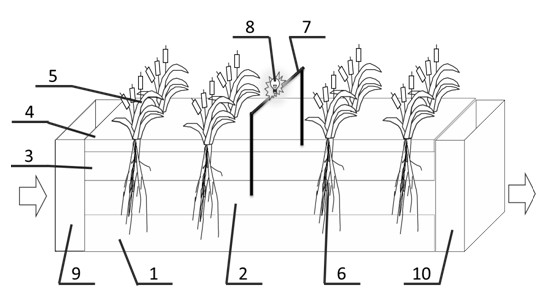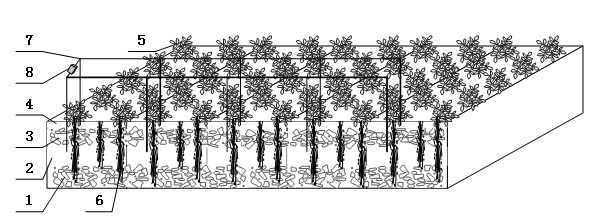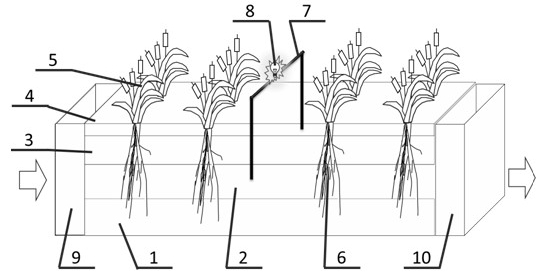Structure for simultaneously realizing ecological sewage treatment and microbiological fuel cell electrogenesis
A fuel cell and ecological treatment technology, applied in the field of energy and environmental engineering, to achieve the effect of promoting enrichment and improving power production efficiency
- Summary
- Abstract
- Description
- Claims
- Application Information
AI Technical Summary
Problems solved by technology
Method used
Image
Examples
Embodiment Construction
[0018] Below, the present invention will be further described in conjunction with the accompanying drawings and embodiments.
[0019] like figure 1 and figure 2 As shown, in this embodiment, the structure that simultaneously realizes sewage ecological treatment and microbial fuel cell power generation is an MFC system formed by the main body of the constructed wetland and external circuits of some constructed wetland components. The main body of the constructed wetland includes a coarse gravel layer, a conductive filler layer, an insulating Fill layer, top layer of conductive material, and wetland plants. The coarse gravel layer is at the bottom, the conductive filler layer is in the lower anaerobic zone, the insulating filler layer is located between the lower conductive filler layer and the top conductive material layer, and the wetland plants are fixed on the insulating In the filler layer, as the plants grow, the wetland plant roots gradually penetrate the lower conduct...
PUM
 Login to View More
Login to View More Abstract
Description
Claims
Application Information
 Login to View More
Login to View More - R&D
- Intellectual Property
- Life Sciences
- Materials
- Tech Scout
- Unparalleled Data Quality
- Higher Quality Content
- 60% Fewer Hallucinations
Browse by: Latest US Patents, China's latest patents, Technical Efficacy Thesaurus, Application Domain, Technology Topic, Popular Technical Reports.
© 2025 PatSnap. All rights reserved.Legal|Privacy policy|Modern Slavery Act Transparency Statement|Sitemap|About US| Contact US: help@patsnap.com



